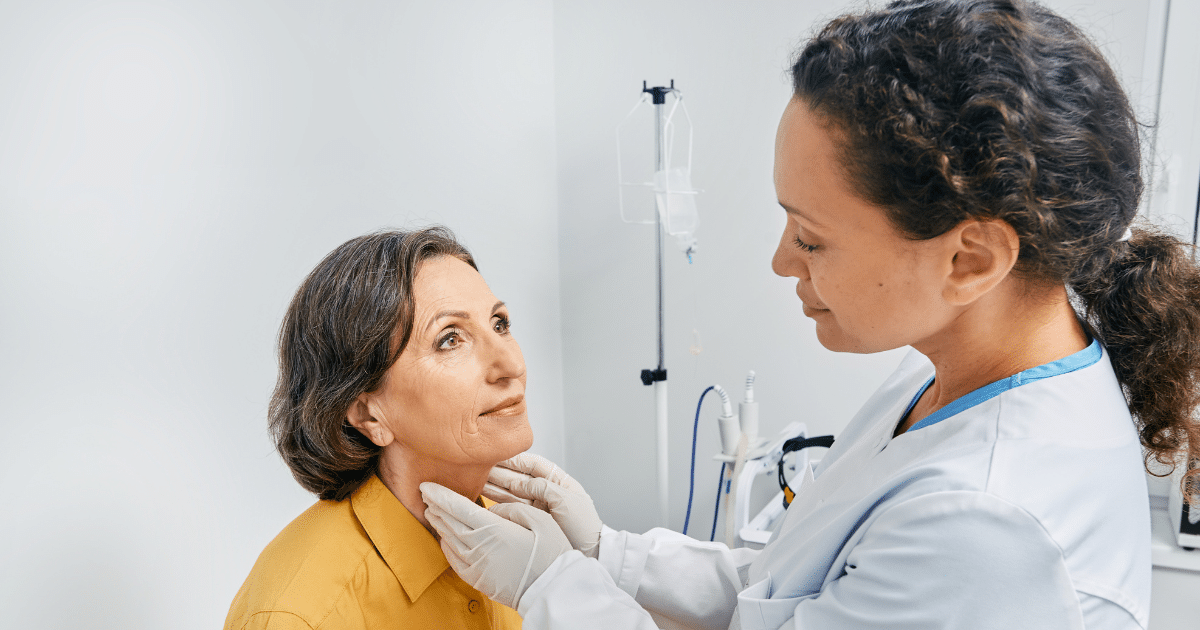Long summer days in the sun can be fun and healthy for us, but as you know, you need to be aware of the potentially damaging effects of sunlight. To help you take care of yourself outdoors this summer, here’s some useful information about protecting yourself from the sun this summer and what to look out for when it comes to taking care of your skin.
Limiting Sun Exposure
Cover Up
Over 90% of cases of melanoma are linked to sun exposure. One of the most effective ways to avoid sun damage and prevent skin cancer is to limit your skin’s exposure to the sun in the first place. When heading to the beach or a park this summer, seek naturally shady areas or bring an umbrella with you if possible.
If an umbrella is not feasible, or you are going to be active while outdoors, you can still take extra steps to protect your skin. Wide-brimmed hats are particularly useful since they keep the sun off your face and neck, which are prime areas for skin cancer to develop. Be sure to cover your arms as well. Light-colored clothing is best since it reflects more of the sun’s rays and has the added benefit of keeping you cooler than if you chose darker colors. Finally, wear sunglasses that block both UVA and UVB rays to safeguard your eyes. The single most important thing to look for when buying sunglasses to protect your eyes is an indication that they block 100 percent of UV rays as this is the best defense against short- and long-term eye damage.
Plan What Time You Go Outside
The Environmental Protection Agency (EPA) and the National Weather Service (NWS) have developed an Ultraviolet (UV) Index to describe the day’s likely levels of exposure to UV rays. You can find the UV Index for your area online. The Index predicts UV level using a 0-10+ scale. In general, it’s best to be outside during the times the exposure level is minimal or low.
| UV Index Number | Exposure Level |
| 0 to 2 | Minimal |
| 3 to 4 | Low |
| 5 to 6 | Moderate |
| 7 to 9 | High |
| 10 | Very high |
| 11 or more | Extreme |
Use Sunscreen
-
- It’s true: Even on cloudy days, the sun can reach your skin, making sunscreen an important part of your daily routine this summer. Sunscreen has been proven to be an effective and safe way of reducing sun damage, preventing sunburn, and lowering skin cancer risk. However, the sunscreen you choose will impact its effectiveness. When selecting the best sunscreen for your use, the American Cancer Society makes the following recommendations:
- · Choose a sunscreen with “broad spectrum” protection. Sunscreens with this label protect against both UVA and UVB rays. All sunscreen products protect against UVB rays, which are the main cause of sunburn and skin cancers. But UVA rays also contribute to skin cancer and premature aging.
- · Make sure your sunscreen has a sun protection factor (SPF) 30 or higher. The SPF number is the level of protection the sunscreen provides against UVB rays. Higher SPF numbers do mean more protection, but the higher you go, the smaller the difference becomes.
- · “Water resistant” does not mean “waterproof.” No sunscreens are waterproof or “sweatproof,” and manufacturers are not allowed to claim that they are. If a product’s front label makes claims of being water resistant, it must specify whether it lasts for 40 minutes or 80 minutes while swimming or sweating.
How you apply sunscreen is just as important as your choice in sunscreen. Put your sunscreen on at least 15 minutes before going outdoors to give your skin time to absorb the product, using a generous amount – at least one fluid ounce. Ensure you cover all areas of exposed skin, especially places that are easy to forget like your ears and your feet. After your initial application, you’ll want to reapply your sunscreen at least every two hours, or more often if you have been in the water or perspired.
Checking Your Skin for Damage
Melanoma is the most aggressive form of skin cancer and is responsible for 7,000-10,000 deaths in the United States every year. Fortunately, if caught early, melanoma is highly treatable. This fact is why it is so important to be aware of the signs of melanoma and conduct skin self-checks.
Risk Factors
Sun exposure and skin complexion are the two biggest risk factors for melanoma. Although melanoma can strike anyone, according to the American Cancer Society:
- · People with fair skin, freckling, and light hair are at a higher risk of developing melanoma.
- · The risk of melanoma is much higher for whites than for African Americans.
- · Your risk of melanoma is higher if one or more of your first-degree relatives (parents, brothers, sisters, or children) has had melanoma. Around 10% of all people with melanoma have a family history of the disease.
Signs
In its early stages, melanoma is often characterized by mole(s) with certain attributes. Specifically, give extra attention to moles that:
- · Are asymmetrical rather than round
- · Have uneven borders
- · Have different colors throughout or are multicolored
- · Are larger than one-quarter of an inch in diameter
- · That change in shape, color, or size over time
- · That bleed, itch, crust or ooze
Noticing even a single mole that meets any one of these criteria is cause for a visit with your primary care physician or dermatologist for examination.
Prevention
In addition to the sun damage prevention measures above, staying safe from melanoma involves vigilance on your part. Check your entire body – even areas typically covered by clothing – at least once a year for suspicious moles or lesions (tip: you can perform this check on your birthday so that you do not forget.) Keep any skin exam appointments scheduled with your doctors and bring anything that causes you concern to their immediate attention.
The sum is the backdrop for summer fun, but while enjoying your time outdoors, please take care to do your part in protecting your skin. If you have any questions on sun safety or would like to schedule an examination to review any potential sun damage to your skin, you can find a local physician near you here.
Looking For a Dermatologist in Connecticut?
Now Accepting New Patients in Orange, CT – Specializing in Medical Dermatology and Cosmetic Dermatology
To schedule an appointment, please call 203-865-6143 or request an appointment online.








